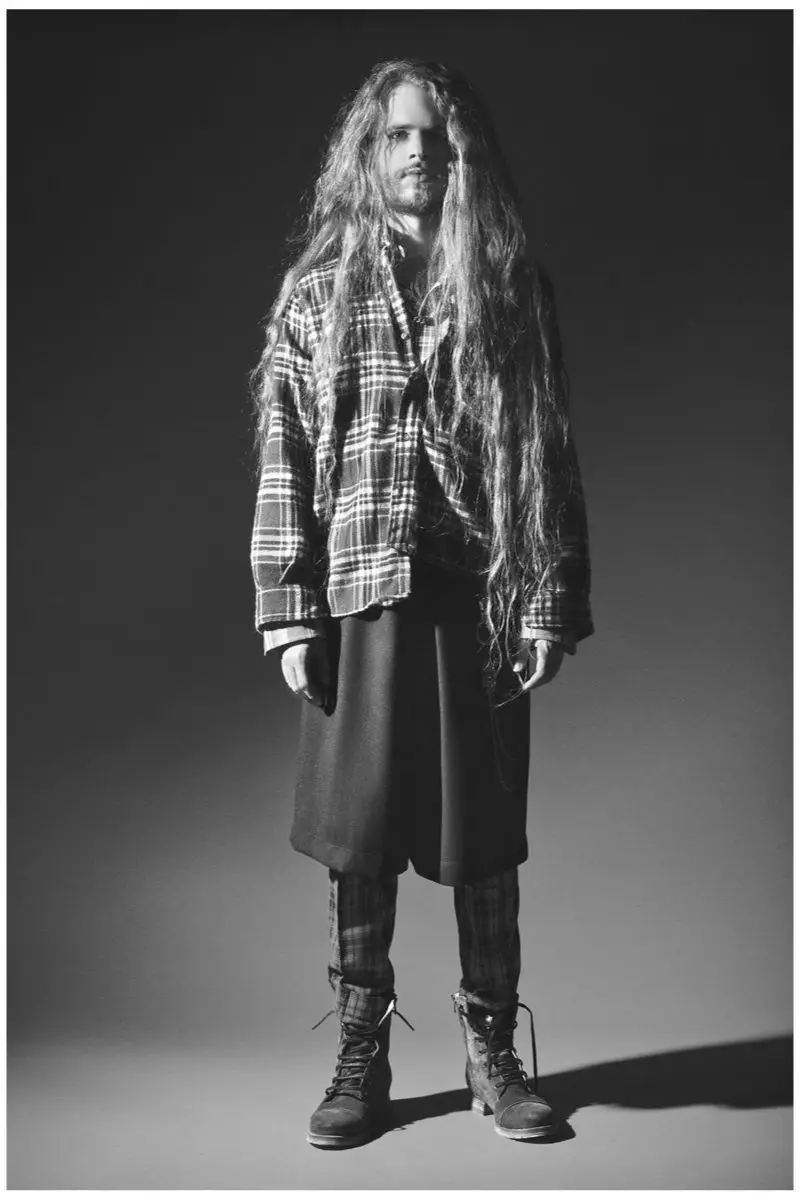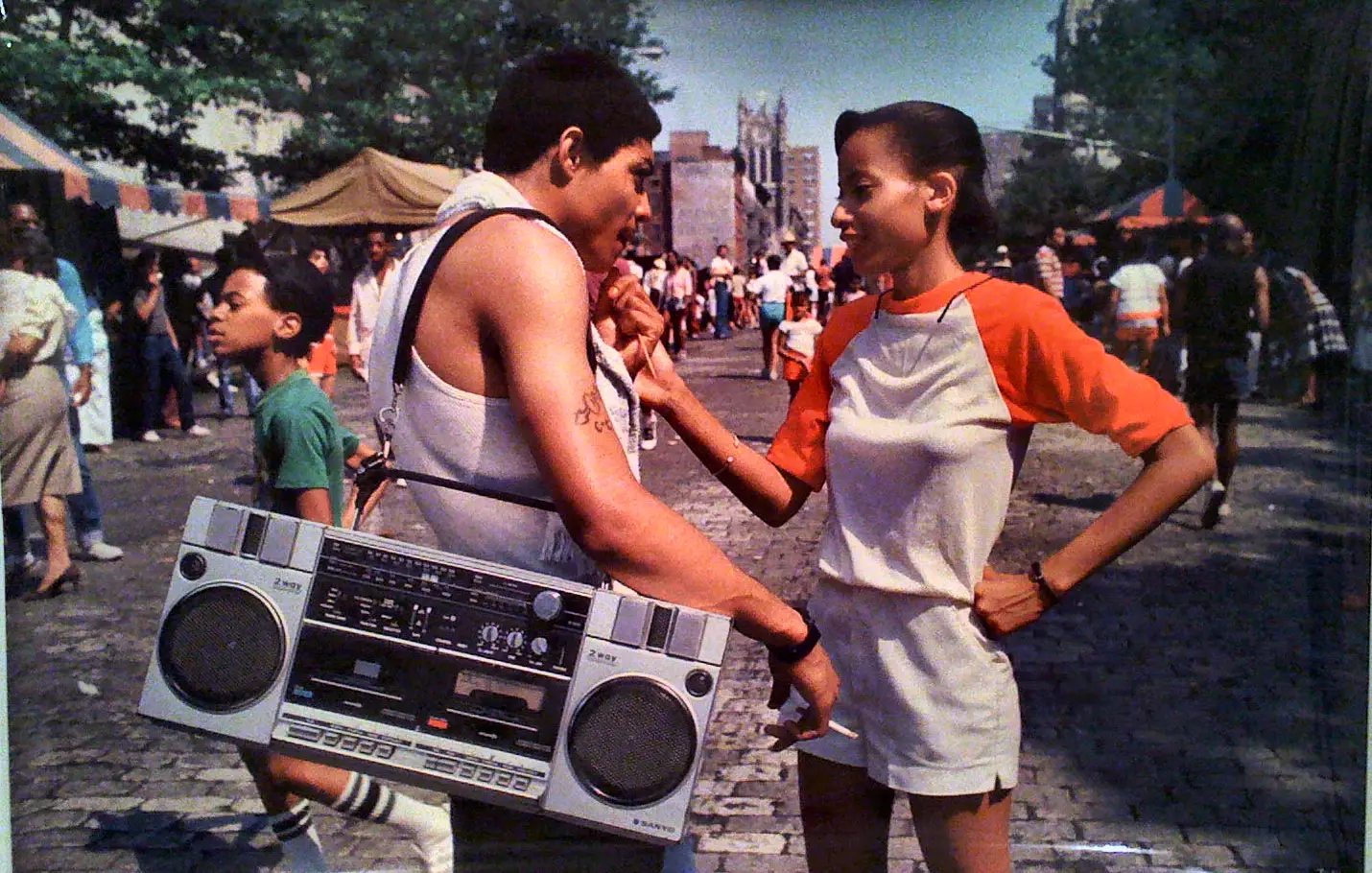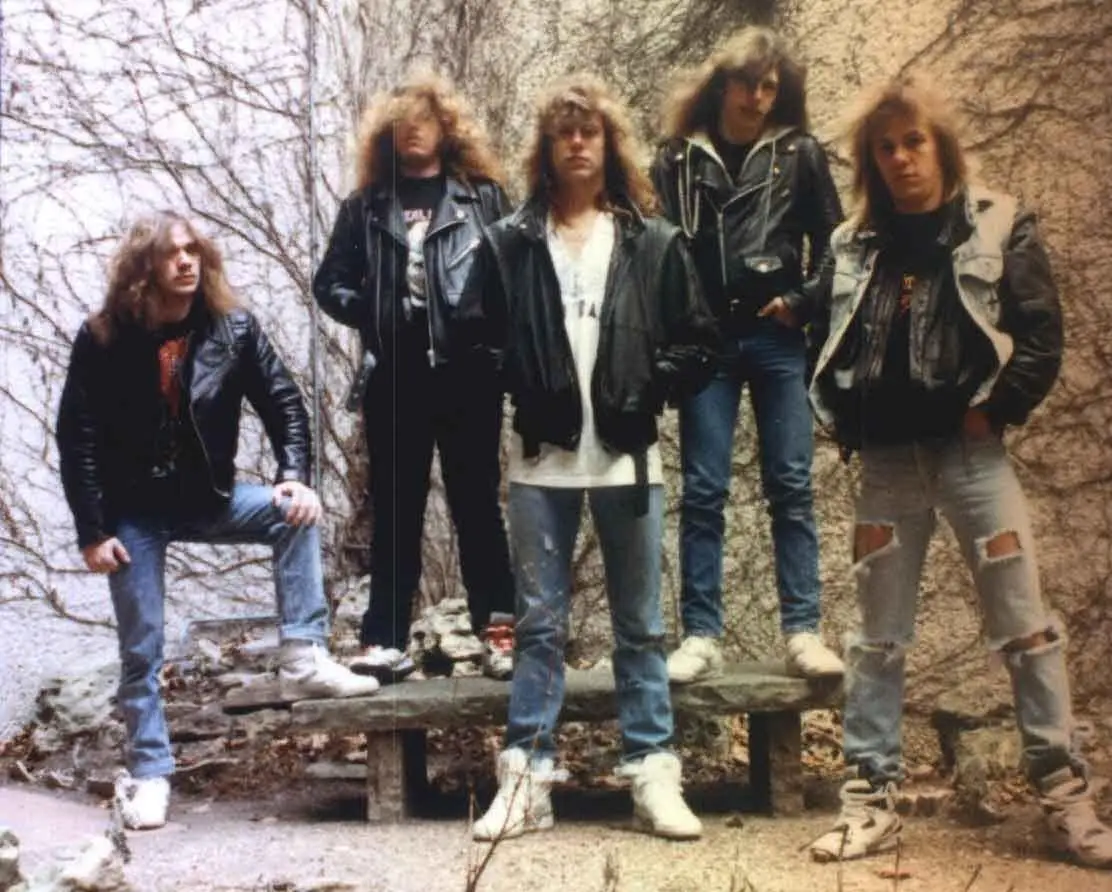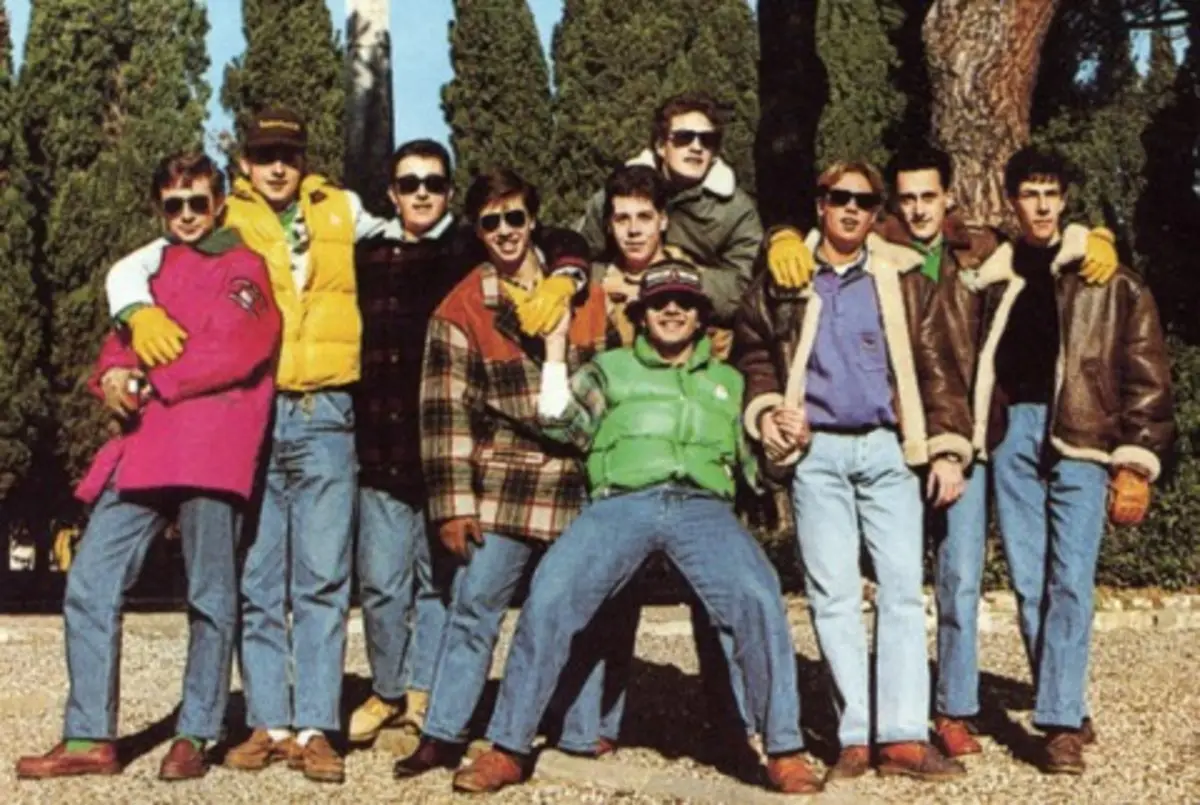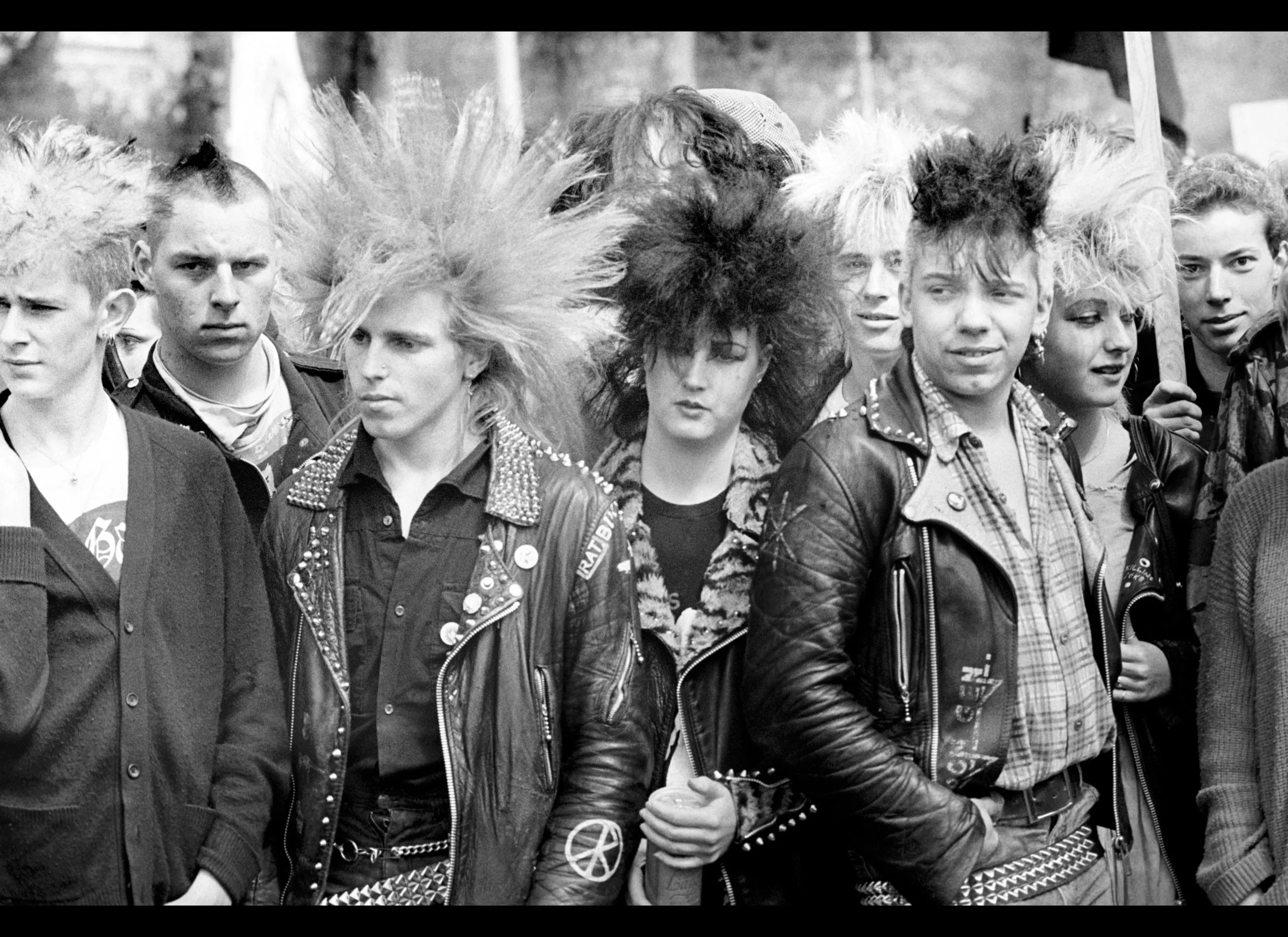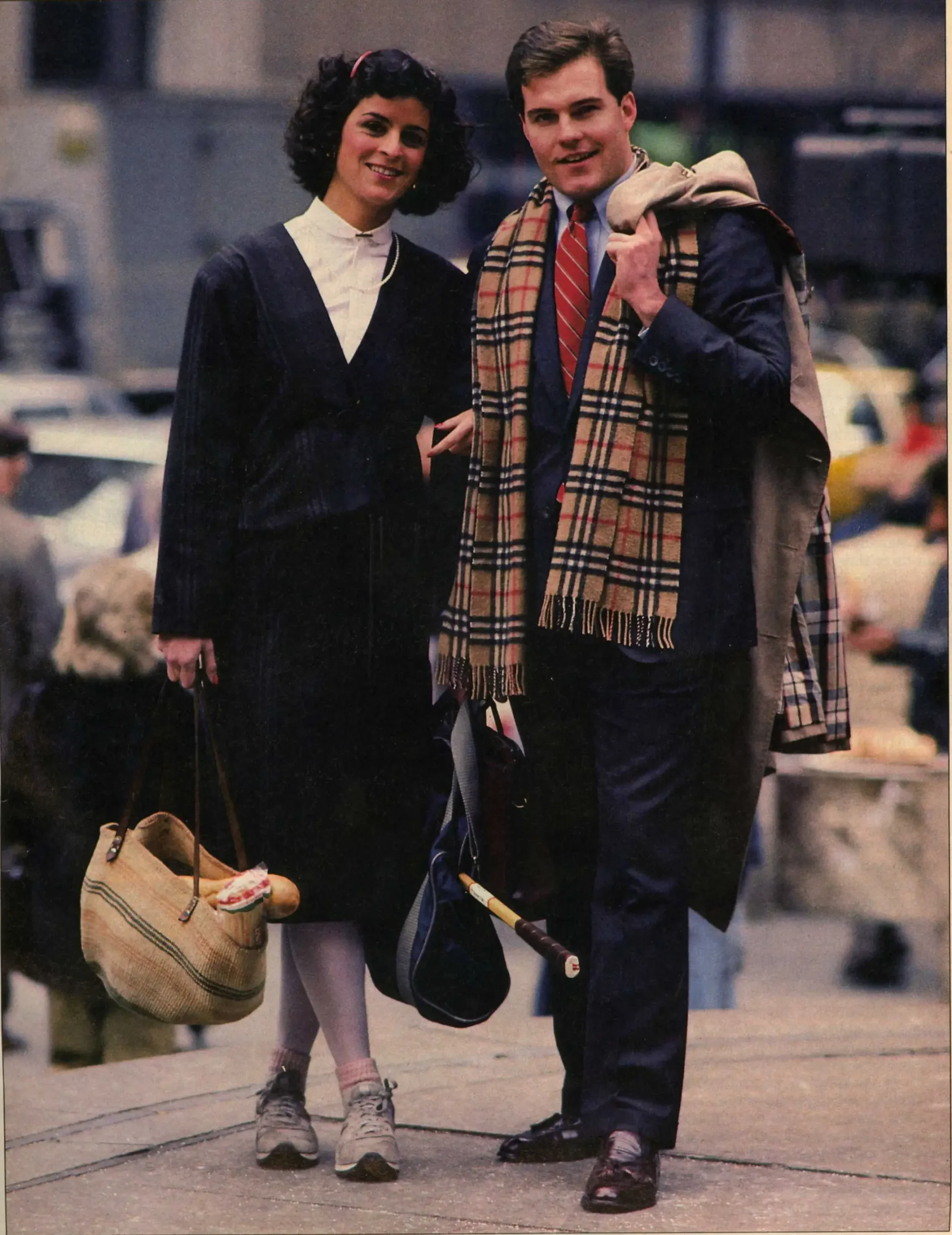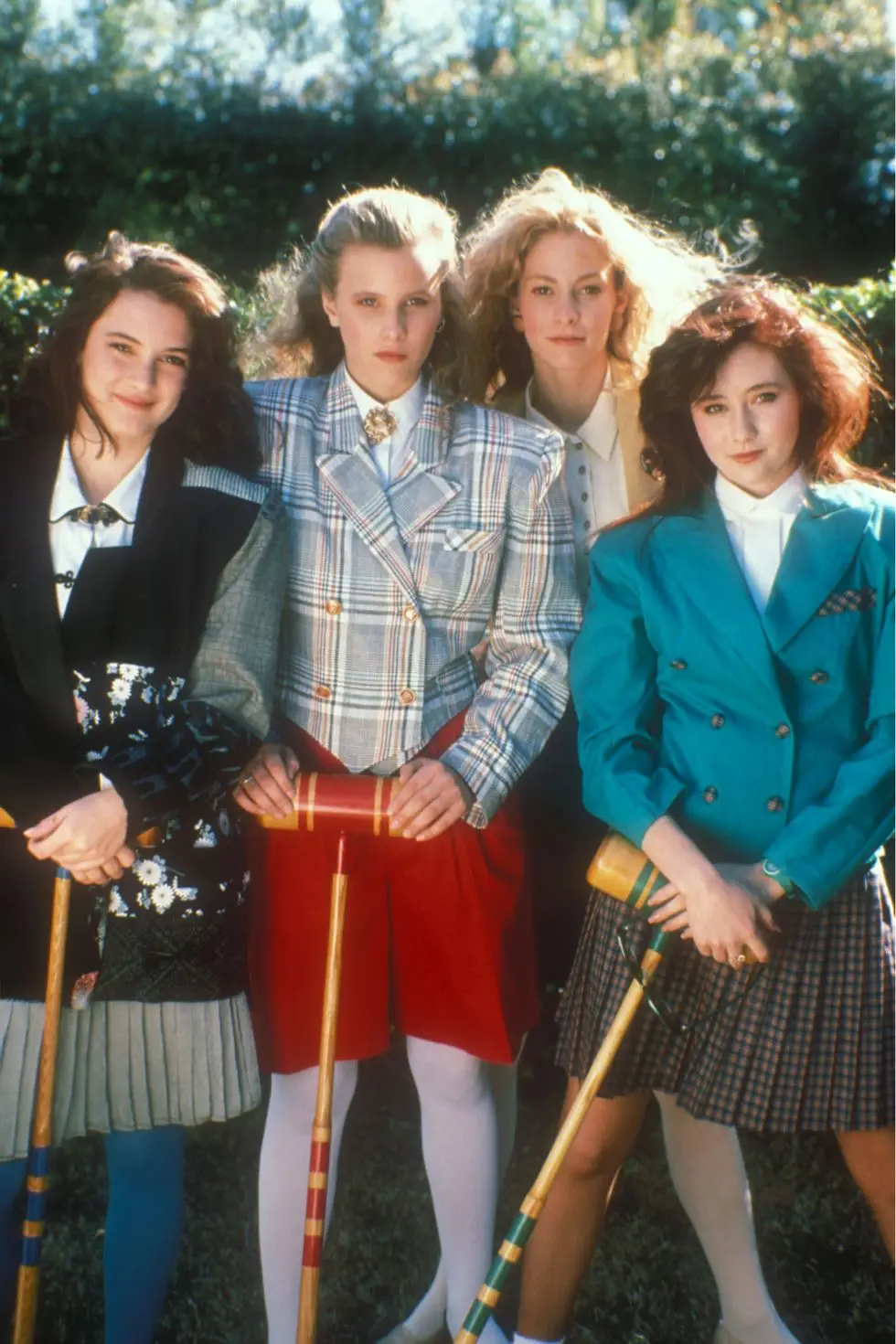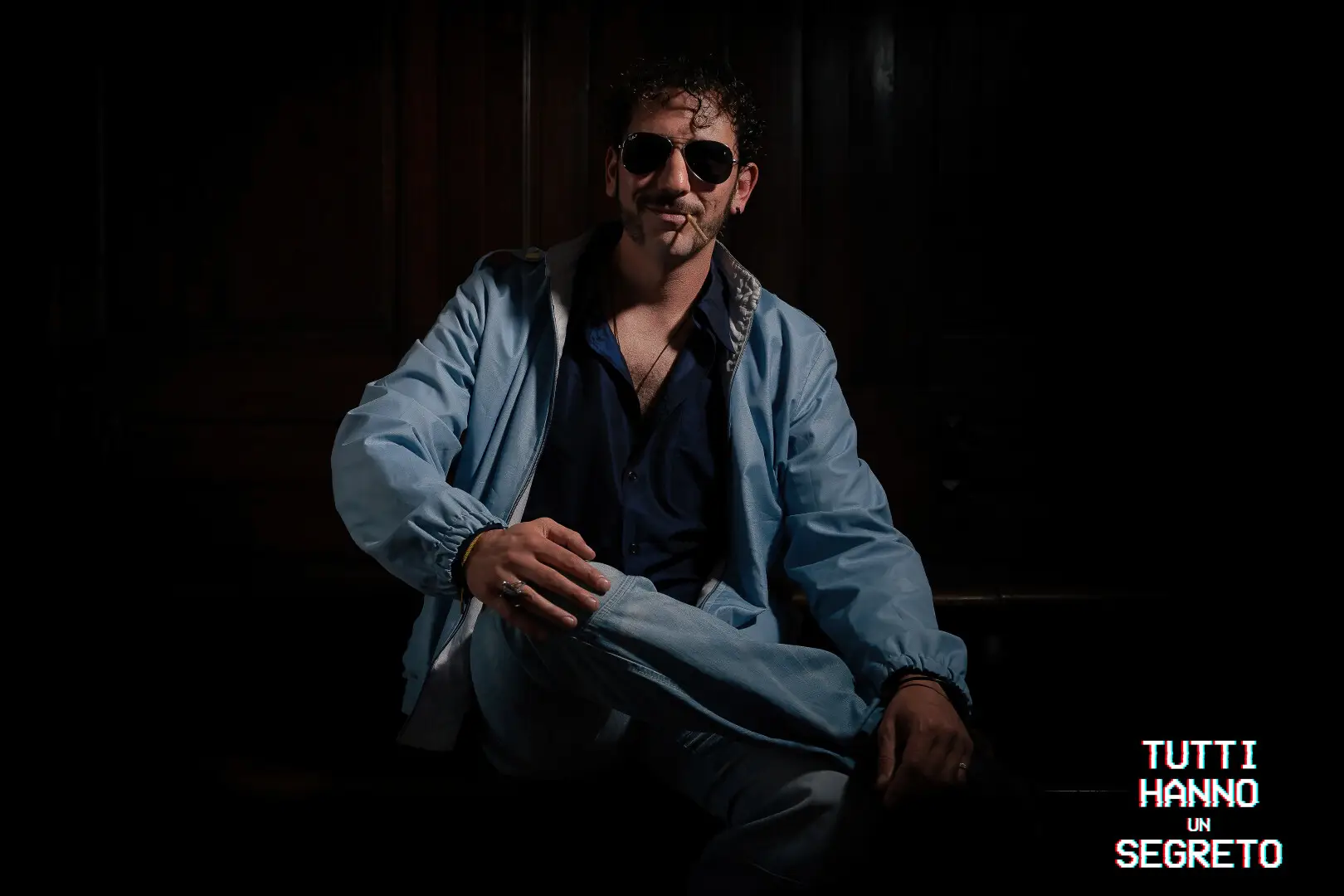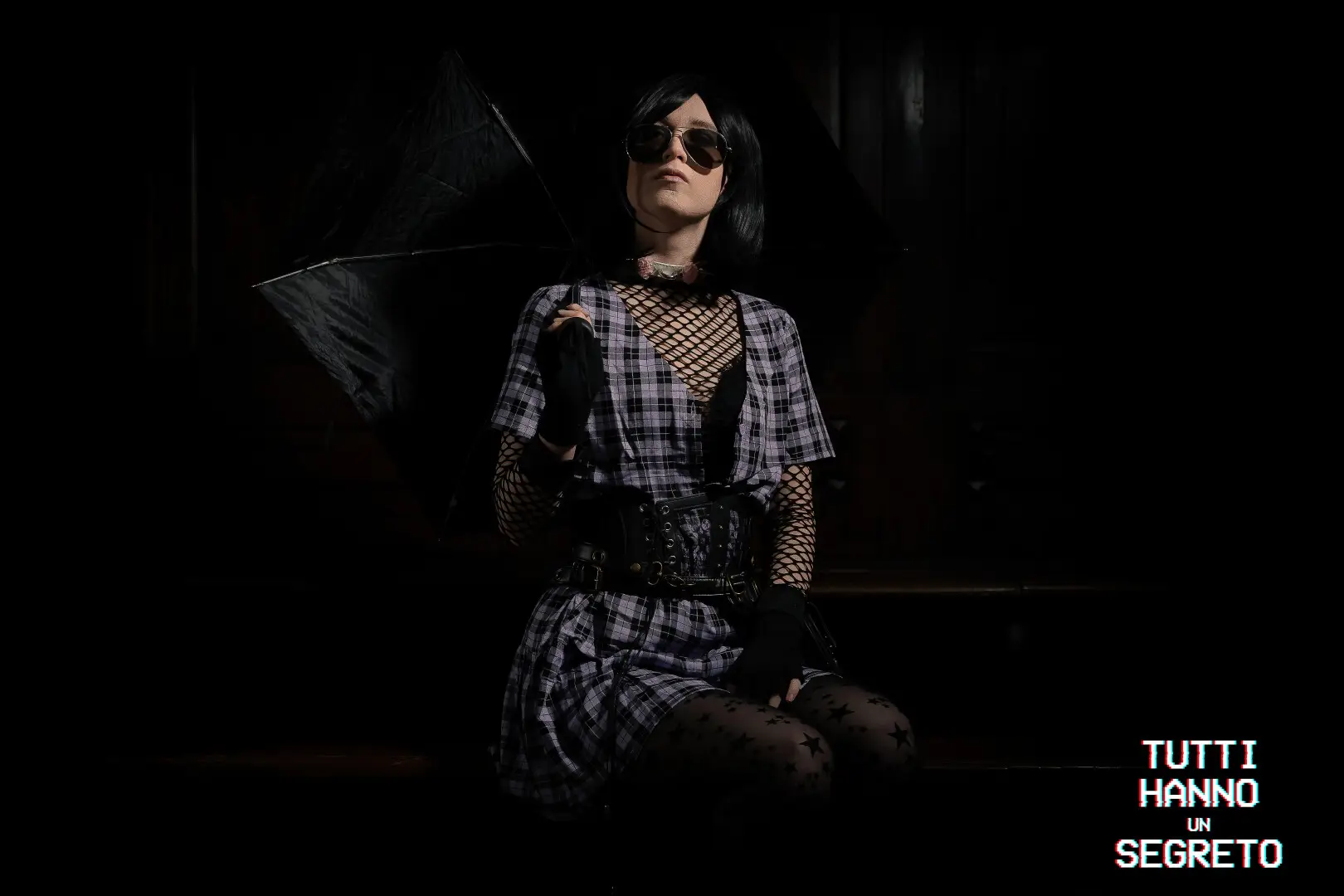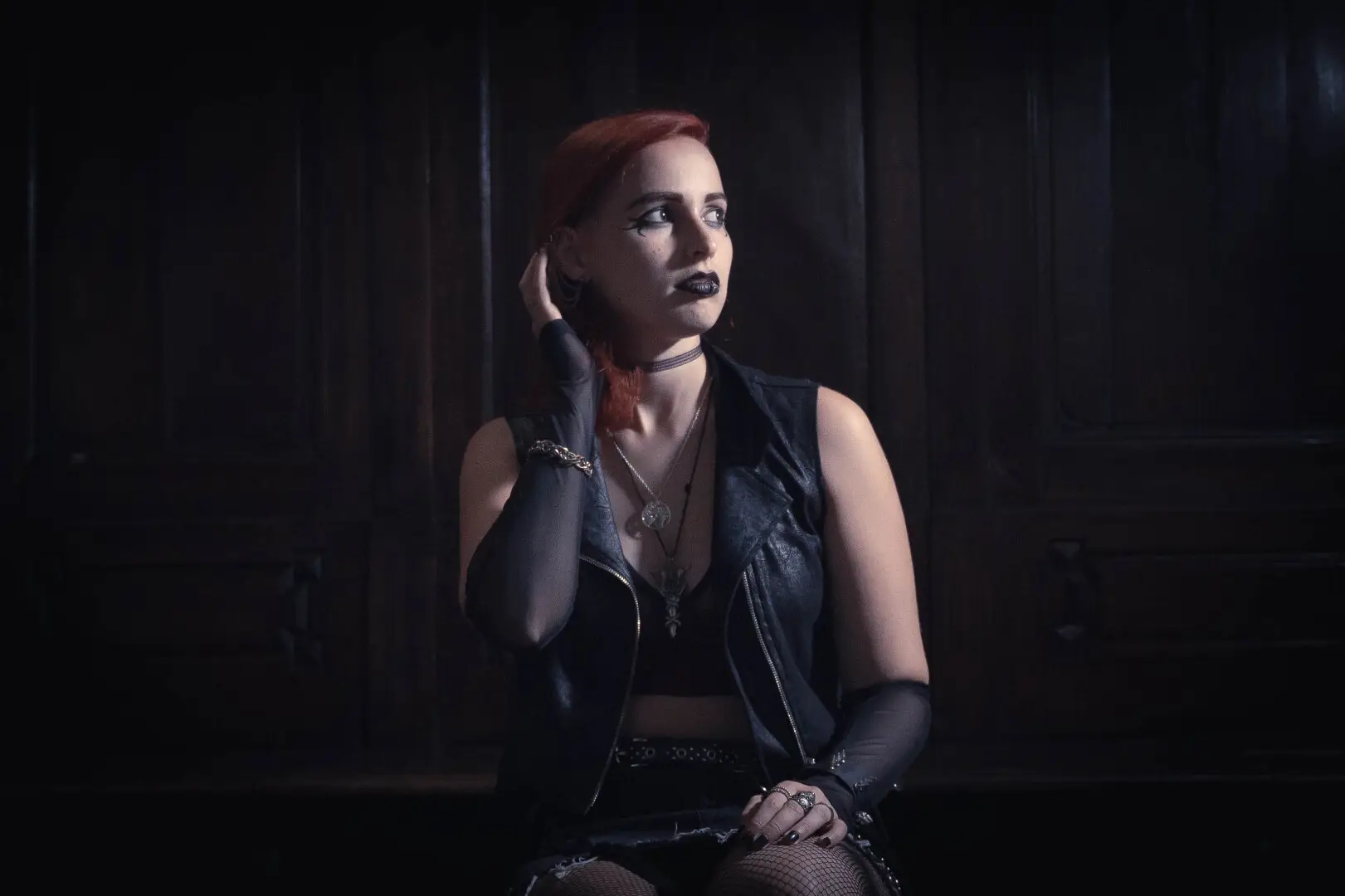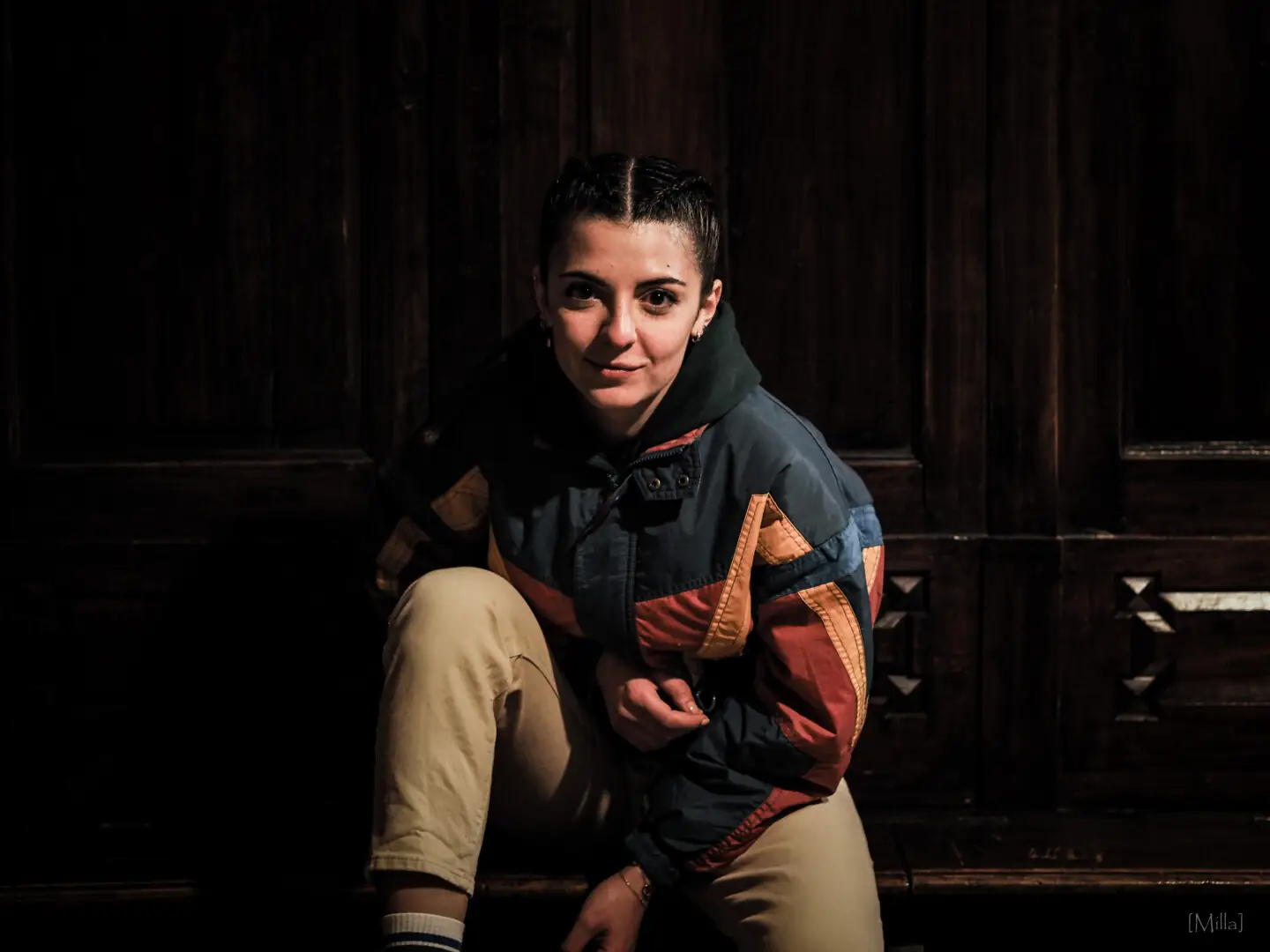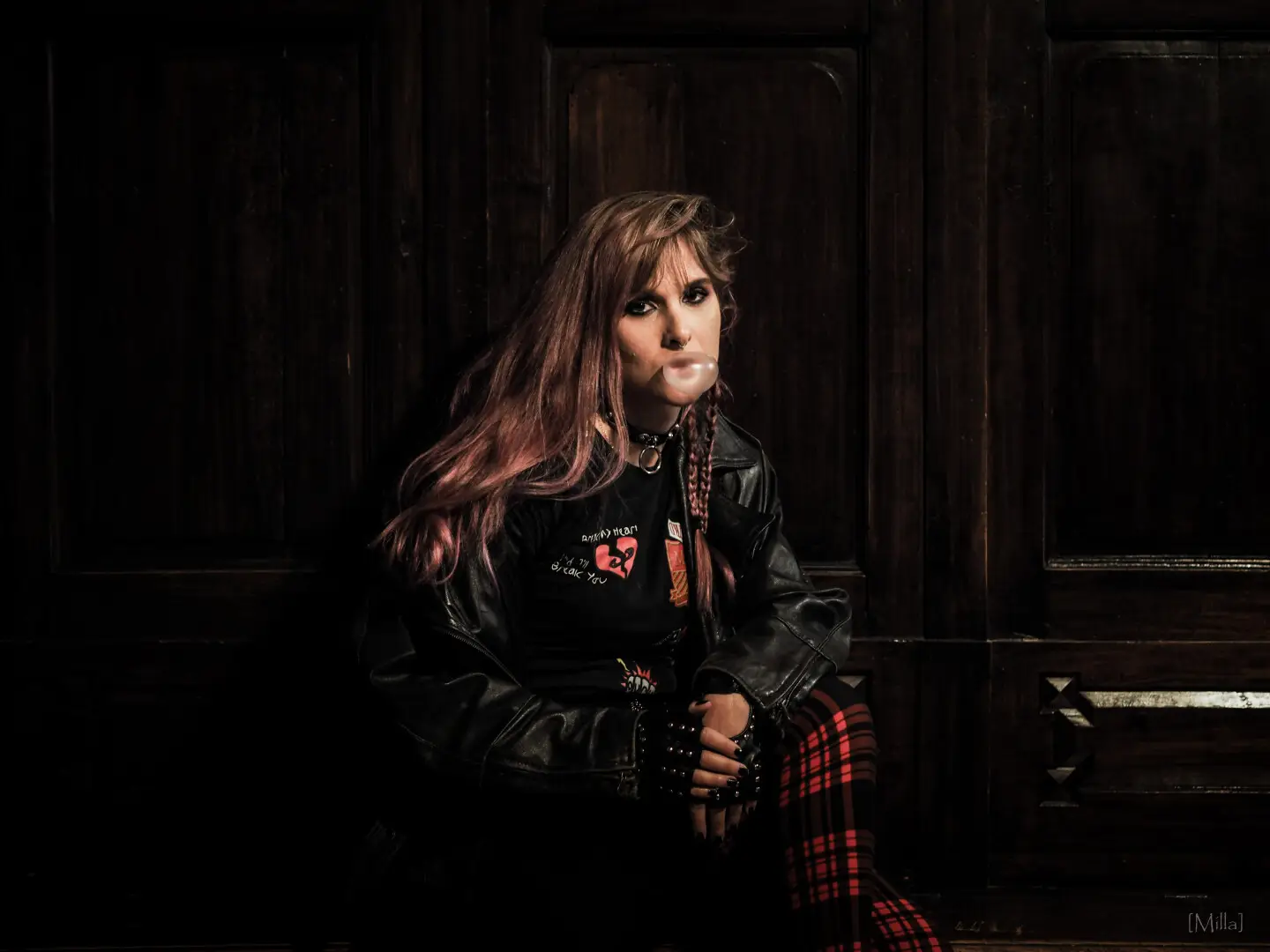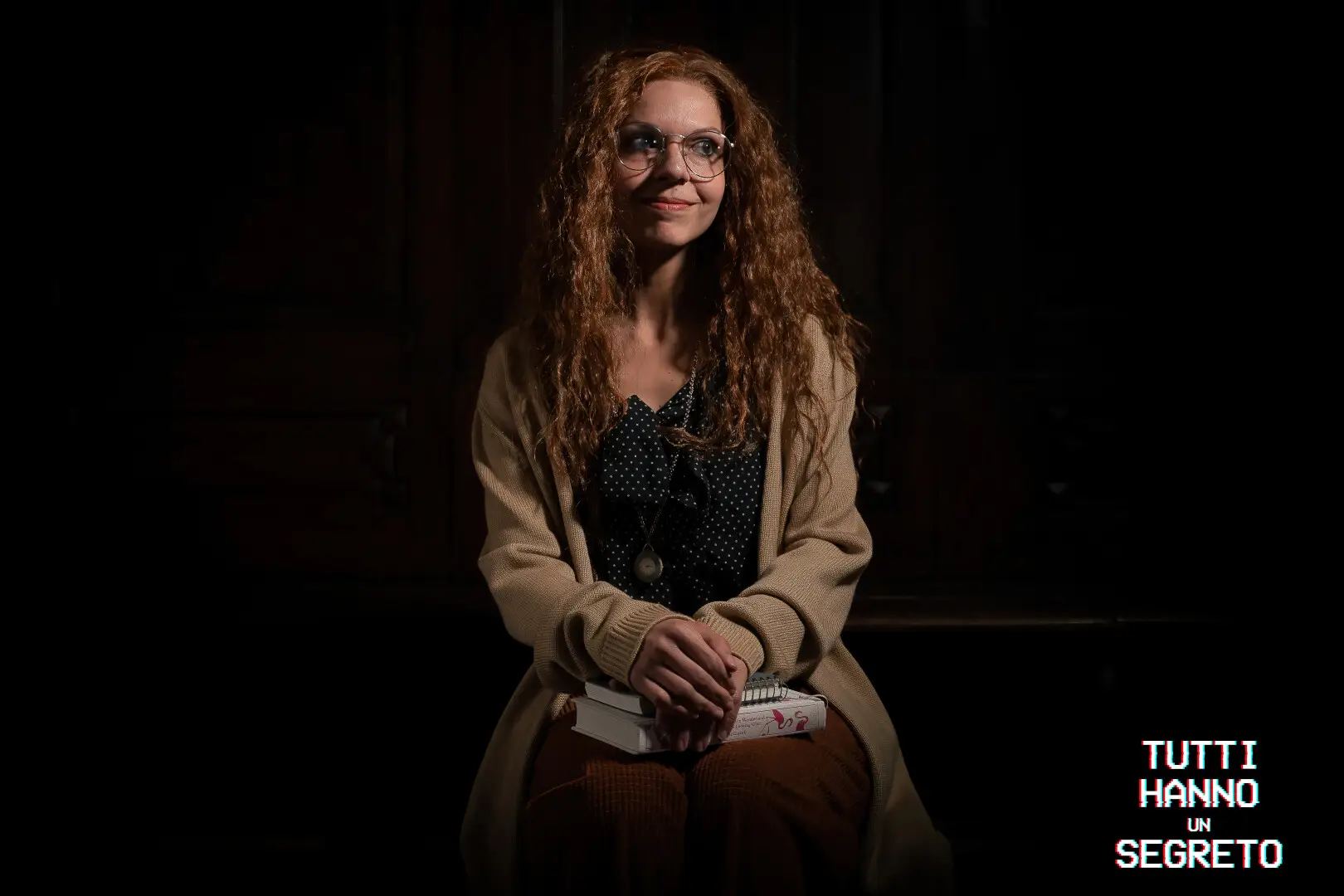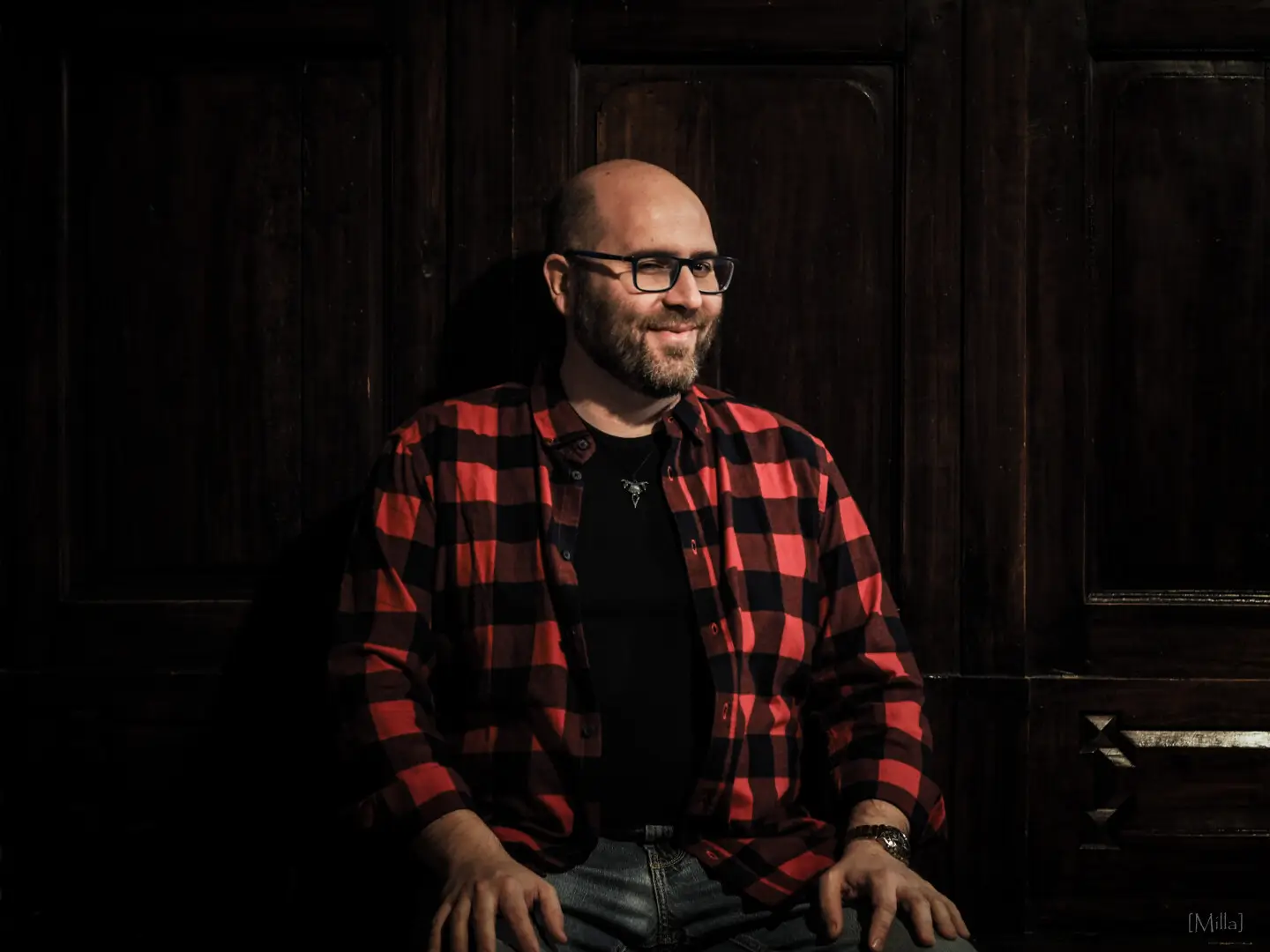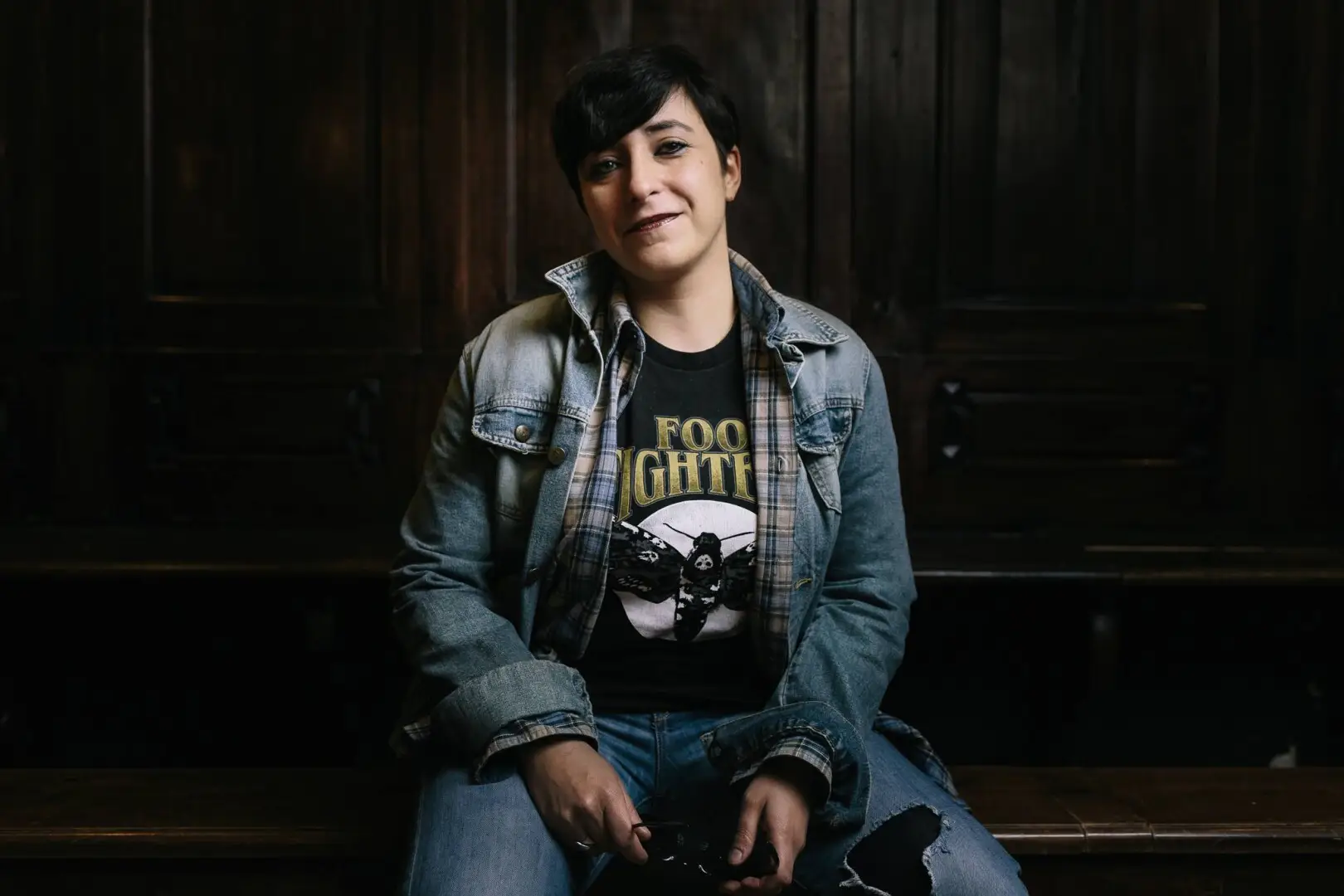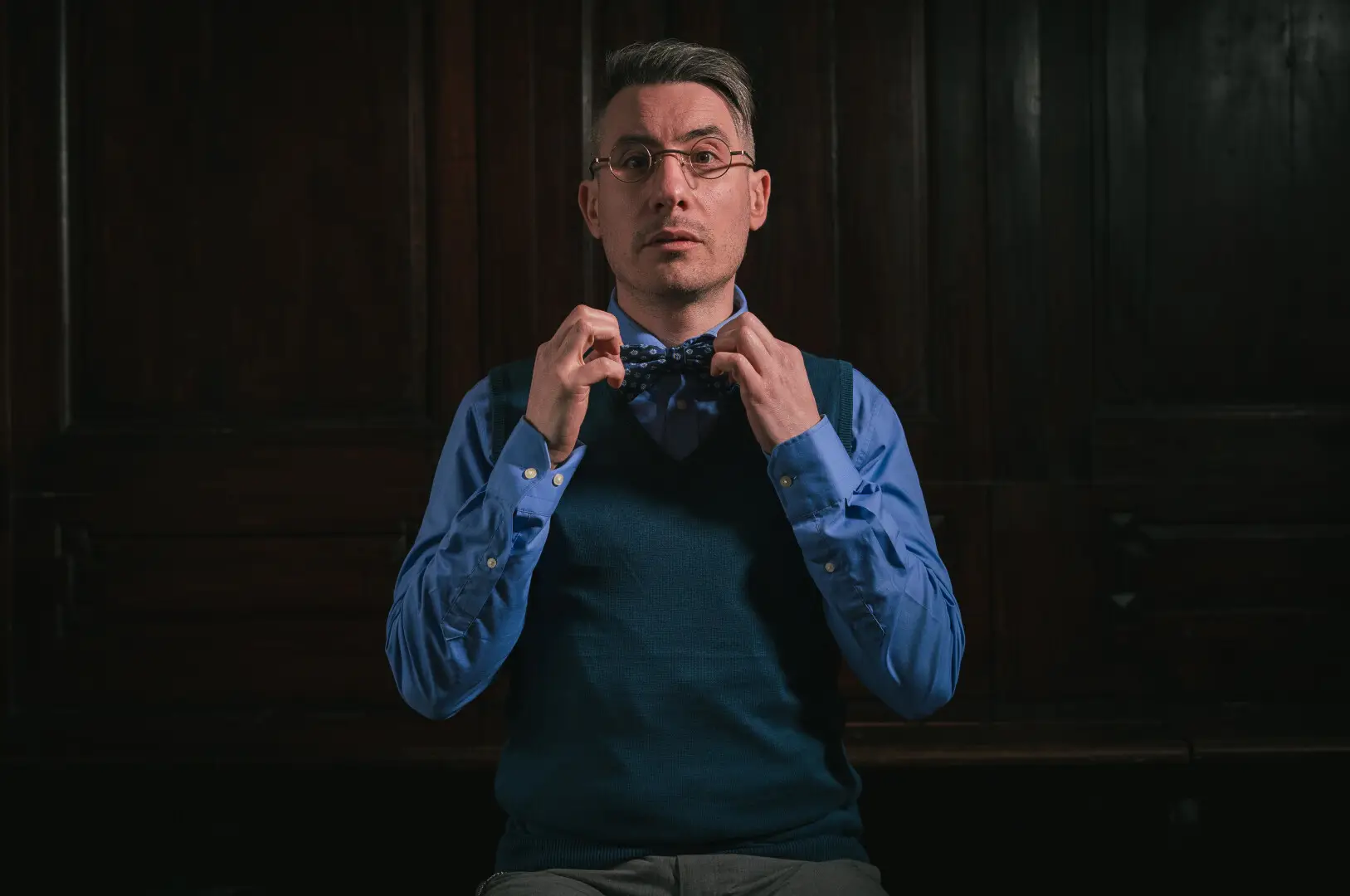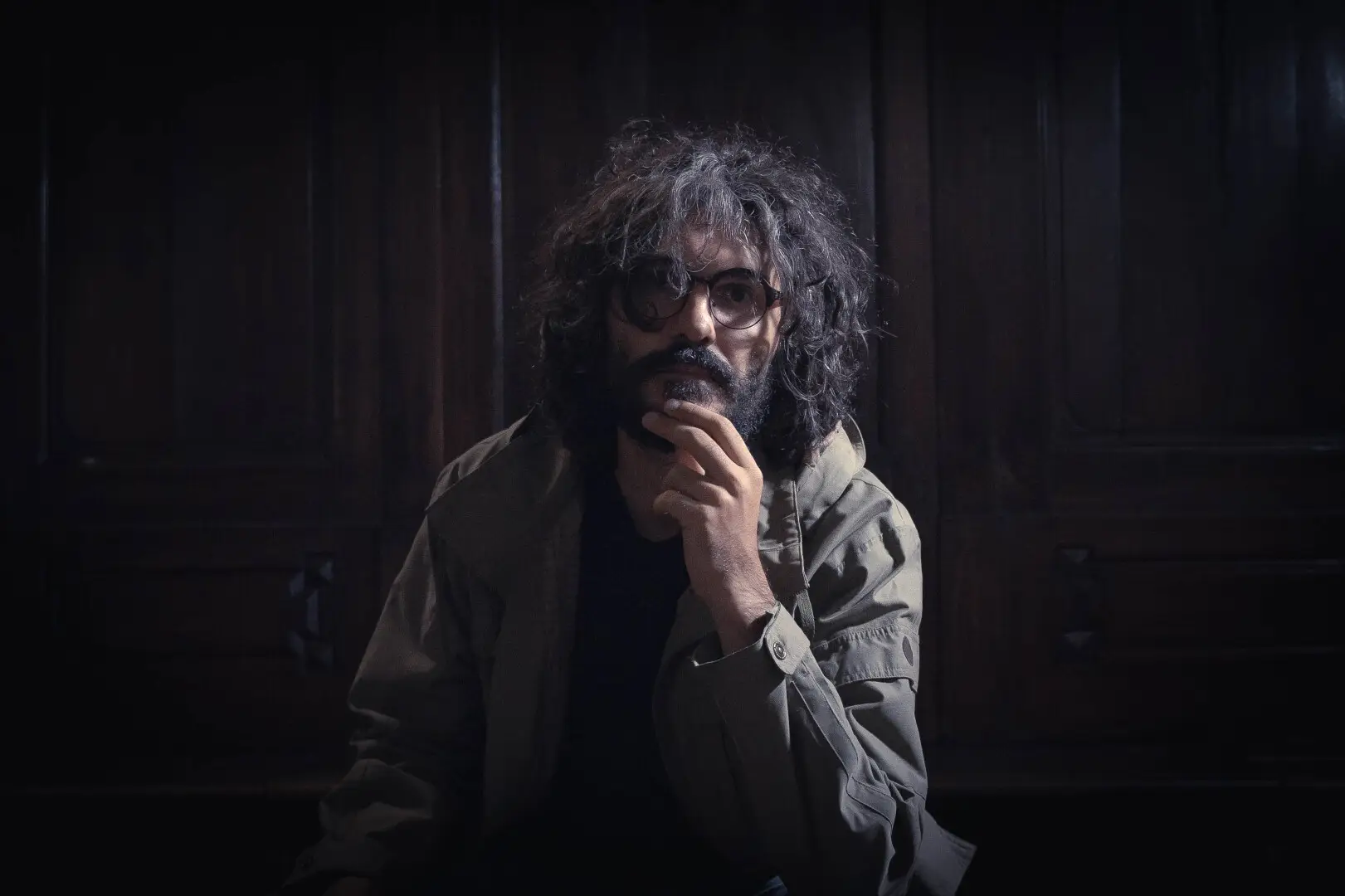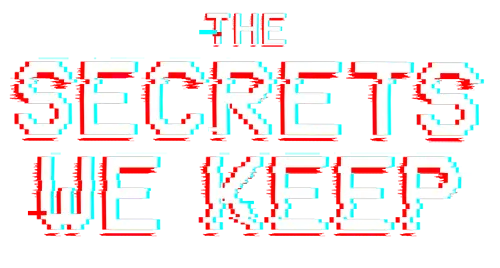
Foreword
Welcome to the guide to the Larp “The Secrets We Keep”! Here you will find all the information you need to participate and enjoy this incredible experience. If you have any doubts or questions after reading it, please contact us!
This is a living document
This guide may be updated with new content in the coming weeks. Whenever this happens, we will communicate it on our channels (Facebook, mailing list, WhatsApp, Discord).

General Information
The Secrets We Keep is a live-action roleplaying game about the past, present and future of a group of orphans. A tale of relationships, human emotion, and childhood memories.
Location: Convento dell’Incontro, Bagno a Ripoli (Florence, Italy).
Meeting Point: 1:00 PM at the larp Location or 12:00 pm at Santa Maria Novella Train Station (Florence) for those who will buy the transfer to the location. The transfer back to the city from the location will be scheduled to arrive at Santa Maria Novella Train Station (Florence) by 2:00 PM (DAY 3). Transfer is not included and has to be purchased separately here.
Participants: 36 per run
Key Words: Emotional, Narrative, Intimate.
POSITION OF THE LOCATION ON GOOGLE MAPS
To reach the location autonomously, we suggest you set “Villamagna” as an intermediate step, so to avoid white roads that navigation apps might suggest.

Program
Day 1
12:00 PM – Meeting at the pick-up point for the transfer
1:00 PM – Meeting at the game location
1:45 PM – Workshops
6:45 PM – Beginning of the Larp, Prologue and chapters 1 to 3
Day 2
9:00 AM – Breakfast (off game)
9:45 AM – Workshop
11:00 AM – Chapters 4 to 8
11:40 PM (may vary) – Epilogue
11:45 PM – Party
Day 3
9:30 AM – Breakfast
10:30 AM – Debriefing
12:30 PM – Final Goodbies and Departure. For those who bought the transfer, arrival in Florence is expected by 2:00 PM.
Workshops
On Friday starting at 13.45, we will hold a series of workshops to help players familiarise with the game’s structure, metatechniques and character portrayal.
The workshop’s exercises have been specially designed and will be directed by our own facilitators (many of which are professionals from a theatrical background). The workshops will help players focus on the central themes of the Larp, specifically:
- Relationships and character interaction
- Characters’ childhood memories
- Identification with the character
- Getting to know the other players, especially those you interact with most, and agreeing on how to interact with the various characters.
- Narrative tools (metatechniques)
- Tales and anecdotes from the characters’ shared past
We’ll use some experiential exercises to better our understanding of how our characters will think, act and feel. We’ll try to look at the world with the eyes of children; make up stories from our years in the orphanage; split into smaller circles of friends to forge more intimate bonds; and finally introduce ourselves to the rest of the group, to make character interactions more believable during the game.
These workshops will ultimately give us the chance to agree on the rules of the game and solve any remaining doubts.

Game Experience
The game experience in The Secrets We Keep is based on three main aspects:
- Character relationships
- Memory walks
- Narrative roleplay
CHARACTER RELATIONSHIPS
The interaction between our characters is vital to The Secrets We Keep. Its story thrives through love, hatred, revenge and conflict. Many of these feelings dig their roots deep into a faraway past, when the protagonists used to live together under the convent’s ancient roof.
But even old grievances are hard to forget, especially after such a complex and painful childhood. Ride the passions that tie you to other characters to the very end. Listen carefully and make yourself heard by speaking from the heart.
MEMORY WALKS
Our obscure relationship to memory is the lifeblood of The Secrets We Keep. Over the course of the game, you’ll find yourself questioning your own recollections as new details emerge, often clashing with the past.
A heavy fog enshrouds your time at the orphanage, especially around Tommy’s death and the tragedy that followed. Events too bloated and heavy to be picked up by the innocent minds of children, or moments you replayed over and over until reality became indistinguishable from the stories you told yourself.
It won’t be strange, then, to discover or rediscover important fragments of your own past, events buried deep within some hidden corner of your mind ready to be suddenly unearthed and burst into the present. What were things really like, back then? Were you the same person as today?
NARRATIVE ROLEPLAY
The Secrets We Keep is founded on characters and their actions. Be believable, always listen to other players and their input to the narrative, and move your character forwards through their own wishes and idiosyncrasies.
Our game was designed as a story. We tried to imagine a different, original world to tell a tale that would put interaction and emotion front and centre. The story is divided into chapters to allow everyone to face every scene with the full depth of their feelings, as well as keep our focus on what’s really important to the characters at any given time.
The metatechniques are another path to the same destination. We have designed them with the goal of deep roleplay more than complete immersion.
NO HIDDEN AGENDA
Something about the story might feel weird or surreal, but this is due to specific design choices.
So don’t fear: you won’t get to the end only to hear that “it was all a dream” or that “you were dead all along, and this is your personal Hell” or other such things. We have no hidden agenda for this story. Which doesn’t mean anything strange is out of the question…

Game Style
We have put together a short list of interpretation tips. Playing by following these tips will help you have a better gaming experience!
Play Generously
Give others space, and help them in the development of their story arc.
Play On The Details
Enjoy those little details that can make your Larp great: a glance during lunch, a clandestine meeting in the garden or in the woods, a gesture of understanding…
Make The Wrong Choices
Imagine that your character is similar to those you see in films like ‘Stand By Me’. These characters have positive and negative sides and often make bad choices in the course of their story. Sometimes they act on impulse in the wake of their most visceral emotions, sometimes they repent or are too compromised to turn back. In this larp making the wrong choices in the wake of one’s character’s emotions is perfectly OK. Remember that THERE IS NO WINNING in this larp. The best thing you can do is to follow your character.
Follow the Game Flow
In this larp the information related to the mystery of the story will not have to be sought by you because it will be provided to you in the course of the larp. The fun here is not so much gathering information as it is putting it together and trying to figure out the puzzle that is being put together as you go along. Make assumptions and take them apart by sharing them with the other participants. What lies in your past?
Few principles we hold dear
The Secrets We Keep is a wide, shared narrative, a story we create by acting TOGETHER with other players and NOT AGAINST them. If there’s any rivalry, it’s always between characters and NEVER between players. Listen to other players and have fun with them.
The Secrets We Keep is a game in which any character can make a difference and is a vibrant part of the narration. It doesn’t matter who you’re playing: the story revolves around you as well. There are no minor roles, everyone is an equal. Play your own character and everything will work out fine.
The Secrets We Keep is an original and unique narrative form, neither tabletop nor a videogame. During the game, do not be passive, do your part, encourage the others, follow the flow of the story. You’re not a spectator!

Safety
Our events are safe and inclusive. We believe in a community that embraces diversity and rejects any form of discrimination based on gender, ethnicity, faith, sexual orientation, physical ability, and any other aspect of people’s identity. There is no room for verbally or physically abusive behaviour at our events and anyone behaving inappropriately will be removed.
The Secrets We Keep is an accessible and inclusive experience, but also an opportunity to address important issues. We believe that every character and every story should have a connection to the reality that surrounds us, with its lights and shadows. And we believe that larp can be a safe space for exploration and reflection.
We care deeply about our players, and we strongly believe in a diverse, inclusive, respectful community. So we want to stress a few points:
- Respect is vital, both between players and organisers and among fellow players.
- Always use your common sense! No rule could ever take its place.
- Never put yourself or others in unpleasant or dangerous situations. This Larp is not based on combat or physical violence, both are in fact completely absent.
- The location will feature an off-game area (Safe Room). If you need a break, a snack or drink, someone to talk to, or just a hug, we’ll be there.
- A Safety Team of trustworthy and empathetic organisers will be there for the entirety of the experience, ready to offer comfort and advice in order to make the most out of your game.
- There will be a moment, during the workshops, to calibrate with the other players.
- Players will always be able to opt out of any unwanted situation, for whatever reason.
- You just need to say “I’m done here” and leave, and nobody will stop you.
If you have specific needs, please contact the organisers. We’ll do our best to make your experience serene and engaging.
In short:
- During the event, there will be a safety team to offer support and back you up.
- There will be a moment to calibrate with other players.
- There will be specific mechanics to opt out of situations where you do not feel comfortable during the game (these will be shown in the workshops).

Setting
THE VINTAGE AGE – THE 80’S AND 90’S THAT NEVER WERE
The Secrets We Keep takes place in an undefined time, loosely inspired by the Eighties and Nineties. We’ve left the period deliberately vague, as if shrouded by mist, a memory about to be forgotten.
The clothing style (see the Costume section), music and technology of the era are going to be more present, while its political and social aspects will be left in the background of our story.
IMAGINE…
Imagine a world where all interpersonal connections happen directly, face to face or through a wall telephone. A world where people sent postcards and exchanged letters and paper notes. To invite a classmate to a party, to ask a girl out for ice cream.
A world of different relationships, where it was easy to lose sight of each other and keeping in touch with someone or something required both interest and earnest concern. A world that’s a little less frantic, where most mass communication happened through magazines and newspapers, or even more through TV sets with only a couple of channels. VCRs allowed you to see a few precious movies outside of scheduled programming.
Fashion and trends spread through hearsay, in schools, in offices, in the park and in city squares. A world where new forms of music birthed countercultures that would make history, ways to dress, to talk, to live: punk, heavy metal and goth to name a few.
A world with no cell phones or security cameras, with no computers and no Internet. A world shrouded by fog, its lines blurred, only alive in fading memory.
Above all, the Vintage Age is the time of childhood and adolescence. The time of our first turmoils, of friendships that would last forever or be lost to the onslaught of life. The time of endless summers spent running in courtyards or roaming the streets. Distant voices, carried by the wind… Play, ambition, disappointment. True friendship and obliviousness to all that is adulthood. The longing for more freedom, with no knowledge of its weight. A world seen through the eyes of children, open and vague and filled with uncertainty and expectations.
A world of sweat and scraped knees, of candy bars gobbled down to race back to the playground. Dusty asphalt courts with grass growing in the cracks, white lines drawn on the rough ground to set the stage for victory and defeat. Where every game was all or nothing, every match a final battle, even though there’d be a rematch tomorrow, and teams and dreams would shift and melt once again.
A world of stolen, forgotten memories. Something lost in the folds of remembrance. Faces, names, and places fading in the background of our existence. Removed for their incoherence, for their pain, or just because life did nothing to protect them. Episodes too embarrassing or damning or gut-wrenching to preserve. Epic moments that became legend, adventures told and retold until they became tall tales. Memories overlapping, shifting, becoming something new.
This is the age of “The Secrets We Keep”, the age we all carry within ourselves. Burned into our hearts. So close and yet so far.
ADULTS AND CHILDREN
Over the course of The Secrets We Keep, the story of your adult character will be entangled with those of their childhood.
Imagine that the Vintage Age extended for the entire lifetime of your character, adult and child. Neither technology nor fashion nor music have moved forward in any significant way. Everything is part of a generalised past-present. The aim of the game is to tell a story about our relationship, and everything else (politics, technology and so on) is just window dressing.
HOW OLD ARE YOU?
The Secrets We Keep is about the past, present and future of a group of orphans. For this reason, we’ve chosen to use a setting as vague as the Vintage Age.
All participants will play as orphans who shared a part of their childhood when they all lived in the same orphanage. The actual age of the players is of no relevance to the narration.
Simply ignore it, and imagine you’re all more or less the same age, unless your character sheet tells you otherwise: some characters are indeed described as the “oldest” or “youngest” in the group of children. This is reflected in the character relationships; you’ll find out more in your character sheet.
AVOID DATES
For all the reasons we’ve already listed, it’s best to avoid referencing famous historical events between the Eighties and the present, as they could somehow put a set date to our story. It’s best to be vague about it.
You can work on topics related to past history (World Wars and so on); just avoid historical references from the Eighties on. Try to always avoid giving a set date, if you can.
STORY – THE ORPHANAGE
The Immaculate Orphanage is a place only vaguely embedded in your memory. You were a little kid the last time you saw it. You remember its crampy passages, its austere rooms. The cracks in the walls, the blackened wood of the tables. The columns in the courtyard, the church you were forbidden to enter save for Sundays, with its confessionals and its hidden corners. You remember the scent of the convent, something ancient that had survived the test of time.
You remember the fragrant nights, the air thick with mauve and wild rosemary. The chill down your spine as you looked at the forest and the monsters that lived under its shade. Slitface. The most terrifying creature born of your imagination.
You remember the wide, sprawling garden (or do you remember it so big because you were so small?) and the woods that became the backdrop of countless games. You remember the room you were given by the Sisters of Charity, a window, a bed and little more. You remember the cloister you were forbidden to play in, even though it was so beautiful. You remember the cold and the heat and the tree-lined path that swelled with the song of so many crickets in summer.
You grew up here, together with the other children of the Button Gang. Nobody else lived there. Just you and the three Sisters of Charity that took care of everything.
THE SISTERS
Life in the orphanage wasn’t all well and good. The nuns were not your mothers, they could not and would not play that role for you. Their methods were as old-fashioned as the convent they had always lived in. All they knew was a world of saints and sinners.
There was always someone who needed to make amends, something you’d need to repent for. Even just in your innermost thoughts.
That world was mysterious to you, and at the same time deeply disquieting. You remember the crucifix, the rosaries and the long Sunday prayers nobody could ever disattend. A sense of guilt loomed over every little thing like a hidden threat. Grotesque martyrs with spears in their bellies stared at you from the walls and adorned the books so carefully handled by the Sisters.
You remember Sister Philippa, the youngest, sweetest and most motherly of the three. The only one to show some semblance of maternal instincts, stilted and clumsy as they were. You remember her coming to your room during a wall-shaking thunderstorm and giving you an awkward pat on the head as you hid under the covers.
You remember Sister Angelica, the Hellhound as you called her. The strict, austere face of the nuns. Her sombre demeanour, her menacing faith and her unrelenting discipline. You remember her fearsome punishments. And you cannot recall a single glimpse of a tender,
compassionate side to her.
You remember Sister Theresa, the eldest and Mother Superior to the convent. Old and fragile, her skin paper-white and paper-thin. She was odd. Some of you had begun whispering about her senility. You remember her wandering around, distracted, absent, walking the corridors at night or muttering to herself.
LIFE IN THE ORPHANAGE
Life in the orphanage wasn’t easy. The Sisters’ teaching methods were strict. You have vivid memories of the punishment they subjected you to, trying to maintain discipline in the convent: reading the Bible out loud for hours on end as the other children played outside, your hands whipped with a stick to amend for stolen bread…
You remember how strongly you wished for a family, a real family like those in the movies. A mother and father to take care of you fully, exclusively and affectionately. Spoiling you and gifting you toys and sweets on holidays.
Instead, you remember the hardships of the orphanage, whose only support came from charity, old ill-fitting clothes worn out by children with happier lives and brand new toys. You remember the mess hall, and how funding left no room for “I don’t like this” or “I’m not hungry”.
You remember having to contend with your friends for the Sisters’ attention, for toys, for the best clothes. And you remember you were on your own in each of these fights because nobody would take your side, not even when the older kids got involved. The teasing, the scrapping, the constant wishing for revenge, for escape, for a family…
THE BUTTON GANG
You remember your first days in the orphanage, the fear of being alone, with no one to call mom or dad. Then the courage it took to grow up, the daily struggle for respect, and finally the pride of autonomy, the feeling of being part of something important: the Button Gang.
You remember a summer day. A furious fight involving all of you, something about who got to play with the ball, or maybe with the rusty slide. A violent scuffle had broken out and quickly spiralled out of control. You remember punching, biting, kicking and scratching. Until the Sisters came to break you up and that’s when the real blows began, the punishments that hurt you inside and out.
In the aftermath you all found yourselves sitting on the grass, poking at your bruises and picking at your scraped knees. The cobblestone was searing hot in the late afternoon sun, and no one dared to break the silence. One of you brought out an old jar full of spare buttons, coming from who knows where.
You all came together to make necklaces and bracelets and trinkets out of them. You remember holding them and looking at each other in the summer haze. There was something different about you right then, in the courtyard, in the old convent rising behind you, perhaps in the whole world.
Things were clearer, starker. That is when you made your pact: whatever hardship you were going to face, you were going to face it together. You would become each other’s family.
Thus, the Gang was born.
You agreed there were rules, and you agreed no one could ever break them:
- The Gang is secret
- Once in the Gang, always in the Gang
- If one of us is in trouble, the Gang comes running
- The Gang avenges the wrongs it suffers
- The majority decides what to do next
After that, things changed. Of course, you all still had your occasional fights, and yours was still a life of hardship and privation, but now you knew you had a family. A special family, a unique family, one nobody could ever take away from you. Something you were a part of, something you had made for yourselves. Something that could protect you from trouble, from the world of adults and all its oddities. You had no leader. You were all equals in the Gang: big and small, weak and strong, boys and girls. You made all of your decisions together.
And even though some hard feelings reemerged from time to time, even though you still found yourselves fighting now and again, the Gang was always the centre of your lives, the fundamental unit, the family you never had.
TOMMY – THOMAS INNOCENT
You remember Tommy. He was one of you. He was part of the Gang, he grew up in the Convent like you all did. You remember him, frail and weak and so very small. You remember his soft voice, his delicate manners, his eyes big and lost as he listened intently or as you played together. You remember him failing to blow his nose.
He was kind and he was sweet. He was different from you, different from everyone else. Different in a special way. You all felt it somehow.
So he became something like the Gang’s mascot. When you set out for some dangerous adventure, Tommy got scared and someone always stepped in to comfort him. He was the youngest among you. You all defended him, you all helped him, like older siblings ought to. You wanted to be the bastion between his special world and the harsh reality out there.
THE TRAGEDY – TOMMY’S MURDER
For most people, life is a coherent flow. Yours is split in two. Two currents, so very distinct. A “before” and an “after” that marked you permanently in body and soul. Even today, as an adult, you feel the effects of the divide.
The turning point was Tommy’s death. One day, as you played in the woods near the orphanage, you found Tommy’s lifeless body. His head was smashed in. You remember the blood, his sprawled limbs.
After that, your memories are vague, buried under the trauma of seeing him there on the ground, the spark of life ripped away. That was the beginning of the end. You remember the pain, the frenzy, you remember your shock and the Sisters’ despair. Then came the police, and the questioning, and the tears every time you were forced to relive that unexplained horror.
As if stuck on a broken ride, going round and round at breakneck speed, you can only remember splashes of colour, everything blurring together and falling apart. You remember the despair, the guilt. You were supposed to protect him. The Gang had failed.
There were some suspects, the investigators questioned everyone over and over again. But in the end, no culprit was found; the reports said that Tommy had been killed by an “unknown party”, the term the police used when justice had failed. Nobody would pay for Tommy’s death.
The Gang swore revenge and huddled closer around that pain. Tommy’s body was buried in the local cemetery, but the pained tilt of his lips never really left you. It haunts your dreams, it catches up to you when you least expect it.
It’s an open wound. Something that maimed you, something that shaped the course of your life. You often find yourself wondering whether that event changed it all. Whether you’d be a different, better person if Tommy were still alive. Your answer is always yes.
THE EPILOGUE
After Tommy’s death, things went from bad to worse. The orphanage was shut down. You were split apart and assigned to other institutes, quickly losing track of each other. However, the Button Gang was never really broken.
The burden of Tommy’s murder weighed over all your lives, making adoption difficult for every single one of you. Until you turned eighteen, and even the institutes abandoned you.
Those were rough years, of loneliness and desolation, away from your friends, from the Gang. On the day of your eighteenth birthday, you were dismissed.
The whole world loomed before you.
In short:
- You are an orphan with no mother or father.
- The orphanage you spent your childhood in was the Immaculate Orphanage.
- There were no other children there but you and your friends.
- The Orphanage was managed by three nuns: Angelica, Philippa, Theresa.
- Life was hard and money was scarce.
- You children founded the Button Gang. It was your only family.
- The Gang had few unbreakable rules.
- Tommy was the youngest and frailest of the bunch.
- One day you found him dead near the orphanage, his head bashed in.
- There was an investigation, but the culprit was never found.
- You swore revenge on the killer.
- The orphanage was shut down after the murder.
- You lost sight of each other, as you all ended up in different institutes.
- You never saw or heard of each other again. Until now.
- Tommy’s death is a trauma you’ve lived with ever since. It has shaped your entire life.

THE PRESENT – THE LARP BEGINS HERE
A LONG TIME HAS GONE BY
Many years have passed since Tommy’s death. You’re an adult now. For better or worse, life has gone on, although you’ve always felt somehow incomplete. You never forgot the orphanage, nor what happened there. You never forgot the Gang. You’ve carried them all within you, and every now and again you’ve found yourself thinking about the others, wondering what they were doing and whether they’d found a place in the world.
Then, one day, your telephone rang and brought you right back to the past. A shrill sound that somehow awakened you, as if from a dream. A voice both familiar and distant at the same time spoke through the handset. That was where it all began.
The remains of little Tommy are going to be moved. That’s what happens after a corpse is in the ground for a certain amount of time: they get sent to a common grave, or cremated to make room. A routine operation. With no parents or caretakers to contact, the municipality somehow got a hold of you orphans as his closest living relatives They’re going to cremate him.
So you’re all going to meet again, after so many years. You have a reunion scheduled.
You’ll meet at the old convent, whose cemetery was Tommy’s place of rest. It’s been empty ever since the orphanage shut down after the tragedy, but the municipality has taken over the ownership and has prepared the place to host you for the weekend.
You tossed some spare clothes in your suitcase, as well as a handful of keepsakes, and just like that, you were off. It’s going to be just like old times. Or a way to lay the past down to rest, at least.
To say goodbye to Tommy one last time. To search your memory for what once was, and finally move on.
THE ORPHANS
The Secrets We Keep will have you play one of the orphans of the Button Gang, reuniting for the first time after many years to commemorate the death of their friend Tommy.
You’ll play as an adult that was strongly affected by that childhood, at the same time carefree and dramatic, and who in some way still carries the scars with them. The other members of the Gang were something like your siblings, the only family you ever had. You grew up with them, you gave to them and took from them, together you lived through whatever experiences shaped your personality and inclinations.
The tragedy was a very long time ago, and after that you quickly lost sight of each other, because the orphanage was forced to shut down. Each of you walked a different path: some started their own family, others had a successful career, and others still had a disappointing, painful life.
Your experiences have changed you and the same must have happened to everyone else. You’re curious about this new meeting, and maybe a little bit scared. The boy you had a crush on, what is he like now? Has the Gang bully cleaned up his act? Has your best friend achieved her childhood dream?
Our childhood determines the way we face our lives going forward, and your earliest memories are some of your strongest. This is your chance to reassess your life, to look at it through the mirror of your past self. The Button Gang will reunite once again, to face one last adventure together.

Metatechniques
For The Secrets We Keep, we have designed a few narrative tools to help us enhance play. We call them “meta-techniques” because they’ll allow players to reflect on the story and directly influence its development, by creating a space specific to the character within the flow of events.
Their goal is very simple: to get to the core of the relationship and emotions you’re most interested in playing out. You’ll have a chance to try them out during pregame workshops, but it’s a good idea to begin familiarising yourself with their potential right away.
The most immediate comparison is to a VCR. During the course of the game, you’ll be portraying your character and talking or acting with the others in the PRESENT: you’ve pressed the PLAY button and the tape is rolling. In specific moments or circumstances, you’ll be able to press other “buttons”.
All metatechniques will be explained during the workshops.
CHAPTERS AND INTERLUDES
The Secrets We Keep takes place over seven chapters plus a prologue and epilogue, each lasting two to four hours. Between chapters, the game will stop for a few minutes. These brief interludes are part of the game design, and will work to strengthen its narrative structure.
The Interludes will take place in a specially prepared room, which will allow players to rest and reflect for a moment, before getting on with the game. They’ll underline key moments in the story, highlighting the emotional peaks and the characters’ changes in response. You’ll be able to use them to enhance your play and delve deeper into the game’s themes and interactions. They’ll be creative pauses, to help you play with more intensity.
THE CHILDREN’S ROOM
The orphanage is vast, filled with memories and feelings. Some spaces are tied to a particular emotion or specific activity, bringing you back to the PAST.
If you want to relive a childhood game or recall an intimate memory, you just need to meet with someone else in the room all players know is dedicated to that kind of moment.
MEMORIES EMERGING
Some items or pictures are a door to specific memories, so finding an old abandoned toy might unlock a fragment of your past that you thought was lost forever.
THE CARD GAME
In what used to be a room you played your games in, a deck of cards has remained, forgotten by who knows who, who knows when. You may decide to play there with your old friends, using the cards as an excuse to speak about the present life of your character.
CHURCH BENCHES
The echoing silence of the church is vivid in your memories. Those benches, on which you used to pray and spend time as a child, can still bear testimony to your inner secrets. You may want to take someone there with you and confess the most intimate secrets or feelings to one of your old friends.
THE BENCH
And yet there are other places in the Convent that bring with them a more harsh air around them. One of these places is “the bench”: a place to have arguments with your older friends or enemies, about the present, the past or other quarrels you may need to address with them. A place to settle those arguments, or make them definitive.
THE PHONE
There’s an old abandoned phone in the orphanage. The line has been cut years ago, and no one remembers the number anyway. And yet, every now and then someone tries to dial a number, and a voice answers.
For the person on the phone, everything else fades, just a FREEZE FRAME in the background. At the other end of the phone, there are no friends, relatives, or loved ones: it’s just your conscience. An inner voice, there for you, to help you flesh out your character’s turmoil and, first and foremost, to put them in play.
At the end of the call, thought becomes impulse and then action. Will you listen to your conscience and live up to its challenges?
FLASH FORWARD
The first time around, you left this orphanage promising yourself you’d become a different person. It’s about to happen again. As your past comes to the surface, the FUTURE slowly takes shape.
Although the Sisters are no longer there to enforce rules, everyone gathers around the table for meals. And as you sit at the table, you’ll see the same scene repeated over and over. Like rehearsals, for a show that has yet to begin.
With each iteration you’ll become a more active part of the scene. Until, at last, the present catches up to the future and becomes a reality. With no way to change it, not anymore.

Costumes
FASHION IN THE VINTAGE AGE
The Vintage Age is placed somewhere between the Eighties and Nineties. Your character’s costume is not predefined, it’s up to you to put it together! Let the character sheet inspire you, and take a look at this paragraph for some tips.
Our goal is not to perfectly recreate period costumes: as players, we have other priorities. Get away from yourself: You have a pair of vintage pants in your closet and they’re simply perfect for this period. It seems like an ideal solution, but if you put them on every day to get to work, think about it for a minute. Literally stepping into someone else’s shoes helps us do the same figuratively, as well. You aren’t required to buy anything for the occasion, but try digging a little deeper through your old clothes or ask a friend to lend you theirs.
Think about wearing something you’d never even touch in everyday life. Think of putting on a costume, even though we’re not reaching back across the centuries, just going around the corner of history.
Get close to your character: Let the character sheet guide you, try to think about your gut reaction to it. Do you think there’s a subculture in the list below that feels just right for the character? Great, you have a point of reference now. Do you think your character wouldn’t be very fashionable, or too old for pop culture? Try and work on their outfit’s colors, be they outlandish or excessively mundane; on the way they wear it, perfectly pressed or rumpled beyond redemption; on the size of it, from tailor-fitted to ridiculously baggy depending on the impression you want people to get.
Remember: although your character won’t be at work during the game, banker by day and punk-rock by night is a very odd mix. Is it in line with the character sheet and with the personal reading you want to follow?
The Vintage Age is the era of youth subcultures and The Secrets We Keep is a game that wants its adult characters to get back in touch with their own childhood and teenage years, when music was our lifeblood and the banner we rallied around. For some of us, it may have never stopped being just that. But for some, this kind of trend may have been a relic of the past, or never a part of our lives at all. You don’t have to follow one of these models, they’re just suggestions. Use them at your own will.
GLAM
Colour, colour and more colour. Then a rain of glitter, sequins and rigorously unisex makeup. A melting pot of pop and rock from the musical standpoint, with a cartoon aesthetic and an ambiguous take on gender.
The flag bearers of this style are Mark Bolan and David Bowie – that is, Ziggy Stardust.
GRUNGE
Where punk is violent opposition to the system, grunge is apathy and silent resistance, against power and fashion trends. Mundane clothes combined at random, to make it clear that their bearer doesn’t care about looks. Flannel shirts, tattered jeans and canvas shoes, with old jackets and jumpers thrown in. The more washed out, the better.
Pearl Jam, Soundgarden and Nirvana: the paladins of Grunge, with Kurt Cobain as their martyr.
HIP-HOP
Straight out of the Bronx, like the urban youth that was rejected by the dream of the Big Apple, hip-hop fashion refuses to bend down to misery and abandonment. Sporty clothes, bright and oversized, topped off by a baseball cap or a neon headband… And of course a boombox on the shoulder. Breakdance, freestyle and street art are weapons to get out of the ghetto and conquer entire cities.
Dr Dre and Run DMC, Public Enemy and Beastie Boys are the pillars of the movement.
METAL
Long hair, devil horns and blasting riffs. Metalheads are never seen without a leather or denim jacket, adorned with metal studs or chains and worn like a uniform: a sense of belonging and rejection of all other music styles are both badges of pride. Leather bracelets, bandanas and t-shirts from their favourite bands are other popular accessories.
From heavy metal (Metallica, Megadeth, Ironmaiden) to hard rock (with Guns’n’Roses and Mötley Crüe), role models abound. Their world is diverse and complex, and navigating it is a mark of distinction.
PUNK
The archetypal counterculture. Punk is disillusion, rage and frustration. Studs and leather collars, anarchist slogans ridiculing the Man, neon hair styled in mohawks and unconventional usage of good old tweed. Then spray-painted t-shirts, torn denim, Dr. Martens, chains and leather.
Iggy Pop, Johnny Thunder and Sex Pistols: icons, all. The latest frontier of transgression is heavy black makeup, paired with piercings and tattoos.
YUPPIES
For the discerning businessman or the young aspiring capitalist, looks are a promise of wealth to come. Suits with padded shoulders and high-waisted dress pants, or eye-catching dresses and high heels, decorated with expensive watches and classy jewellery. Or a more sporty look, with polo shirts and v-necks hanging over the shoulders or tied to the waist in an act of deliberate casualness.
Music is just background noise: a yuppie’s role models are successful millionaires, actors and fashionistas.

The Characters
Casting
Before the start of the Larp, you will receive a form where we will ask you to indicate the 7 characters that intrigue you most. Once your preferences have been collected we will cross-reference all your indications to assign you your favourite characters. When the casting is complete we will inform you on the Larp channels (email, Discord, WhatsApp, Telegram, and Facebook).
There are no less than 35 characters to choose from, each one special and unique. We wrote and designed them with great love. But we know that reading them all can be challenging, so here are some tips for making your choice.
Archetype
Let yourself be inspired, follow your instincts. If some archetype intrigues or stimulates you, then make a note of it. It is an excellent starting point because it contains the essence of the character in a single sentence.
Trigger
Some characters have had complicated and perhaps painful histories. Take a look at the character triggers to see if you want to discard some of them because you prefer not to deal with certain issues.
Read the full sheet
When you have narrowed down the shortlist with the criteria of Archetype, and Trigger Warning, then read the whole character and all the material connected. At this point, you can go deeper.
Genderless
The greatest majority of the characters are freely playable in relation to gender and have been written specifically with this in mind. So you can rethink the relationships on the character sheet according to the gender you prefer to play.
The very few characters with a specified gender have been written to tackle specific themes connected to them. Any player could play them, but the character’s gender is fixed.
Transparency or Spoiler?
Character sheets are “transparent” and public, which means they have no secret parts. Why? Because The Secrets We Keep is a choral story that is built together, never against. Although secrets and conflicts will not be missing, they are always part of the fiction and rely on your interpretation and ability to create stories. With this choice, we believe we make this point even more central. We also don’t want to put players in the position of choosing a character they don’t know everything about, the characters offer different experiences depending on the themes they are related to. We want all our players to know the nature of a character before they can choose them.
If you prefer to know only the bare minimum about your character, you can avoid reading the character sheets of the characters to which yours is related. This way you can keep some “mystery” about certain aspects of the character’s life. During the game you will anyway discover new information about the past of your character.
Fill in the blanks
When we designed the characters for The Secrets We Keep, we wanted to create a structure that would ensure a stimulating experience integrated into the story. But we also wanted it to be free enough to allow everyone to “fill in the blanks” and make their own interpretation unique. In addition, having room to customise your character will make it easier for you to feel comfortable in their shoes. The parts that you find written in the character sheet should be considered “immutable”, but anything that you do not find in the sheet (e.g. what you did at a certain time in your life, what your favourite food is, etc.) you can decide for yourself.

The Character Sheet
The handouts for the characters in The Secrets We Keep are made up of various documents and describe both the child and the adult.
It will be up to you to connect these two aspects, filling in all the gaps to highlight points of continuity and contrast. How much of that child still lives inside each of us?
THE ADULT
The testimonies of the present: these are documents of different kinds which indirectly present the adult life of the character. Instead of a profile written by an omniscient narrator, there are letters, notes, contracts and a whole series of elements, which vary from one character to the other, and offer some insight into their identity. Allow yourself to be inspired by these documents which tell you about the adult you have become to imagine who you are now and what you are doing. You will find these documents at the end of your character’s profile. In some cases, you might feel useful to print and bring with you a copy of this part of your profile, but it’s not mandatory.
Archetype: A single word which presents the stereotype of the character, to describe how they appear to the rest of the group. To what extent does this archetype also apply to the adult?
Circle: Back in the days of the orphanage, everyone was in the Gang, but there were different groups based on shared interests or simply age. We all remember which one we were in.
The three questions: rather than real questions, these are suggestions to help with your interpretation of the character. In fact, each of them is likely to have an answer that starts: “Yes, and…” or “Yes, but…” What they are is something to develop in-game. Let these questions inspire you and guide you during the larp.
Turning point: Maybe it was growing up as orphans, maybe it was Tommy’s tragic death, or maybe it is just that no adult can escape from the problems of life. In any case, all the characters have to come to terms with a dilemma that is tormenting them. Even though once they get back to the orphanage the present will have to wait, far from telephone calls from work or contact with families, it is right here, back where it all started, that the characters will find the strength to take that crucial decision. You have two roads before you: which one will you take?
The motivation: Shed light on your past. The same for everyone. It is the reason why the characters have returned to the orphanage. The reason why they will all stay together to the bitter end, whatever way it turns out.
THE CHILD
The school report is designed to give shape to the child as they were seen from the point of view of the nuns in the orphanage.
Pupil: All the characters are orphans who were given the surname Innocent. Only the initial of their first name is given so that the character remains unisex and you can choose whatever name you like.
Nickname: In red is the nickname of the character, what they were called by all the children in the orphanage. This was scrawled on the reports by one of the children by way of a joke, but also the nuns knew those nicknames and used them in their description of the children. That’s how it worked in the gang: not even school reports were sacred. This is the name we will use throughout the game.
Praise: Episodes which the nuns felt deserved to be recorded because they exemplified the positive traits of the child. More than just a profile, it is an anecdote which ties the character to the others involved and can always be remembered or shared.
Misconduct: Episodes which the nuns felt deserved to be recorded because they exemplified what they perceived as the negative traits of the child. Here too, it is an anecdote which places the child within a network of interactions and shows what they are really like.
TRIGGERS
Some characters face issues that may impact the sensitivity of some. For this reason, in each character, we have briefly indicated the major triggers and themes the character might face. In case you have any doubts or questions contact us at info@chaosleague.org
Go to the page containing all the characters. To log in, you will be asked for a password that we have sent you by e-mail. If you have any doubts, please contact us.

Logistics (practicals)
What to bring
- Your costume (see Costume section)
- Toiletries (towel, toothbrush and so on)
- Linens for a single bed and a pillowcase (covers are provided by the location), or a sleeping bag
If you need to rent Towels and Linens, please contact us at info@chaosleague.org
Rooms
All rooms in the convent are double. In the character selection form, you will be able to indicate who you want to share your room with or other specific needs.
Cruelty-Free Food
We are happy to collaborate with the anti-speciesist refuge Ippoasi. They will cook exceptional, delicious and vegan dishes. Another small step towards making Larp more sustainable and ethical. Your donation helps to finance their shelter and care for the animals that live there in the wild.







